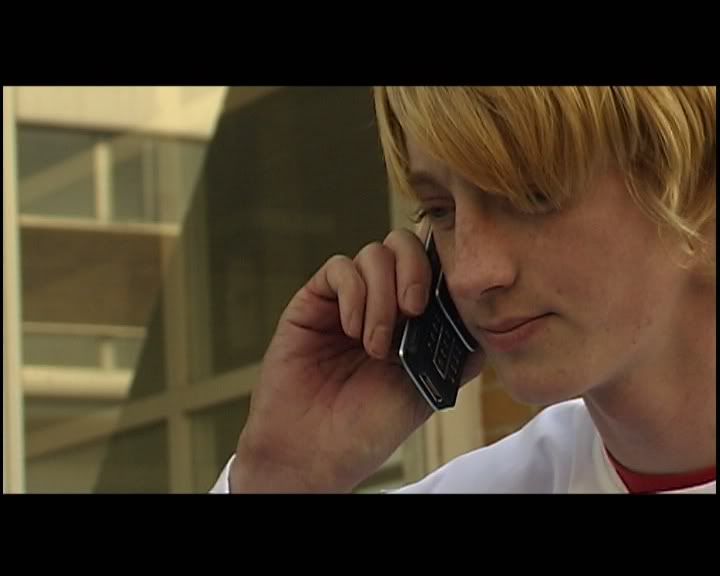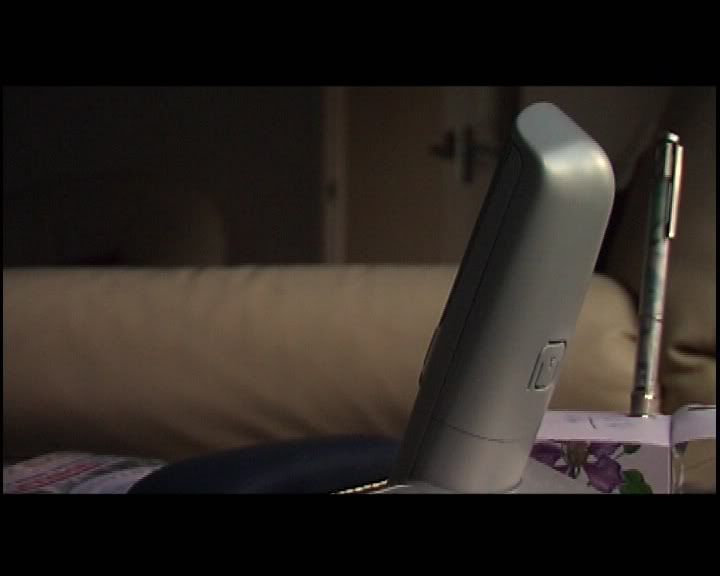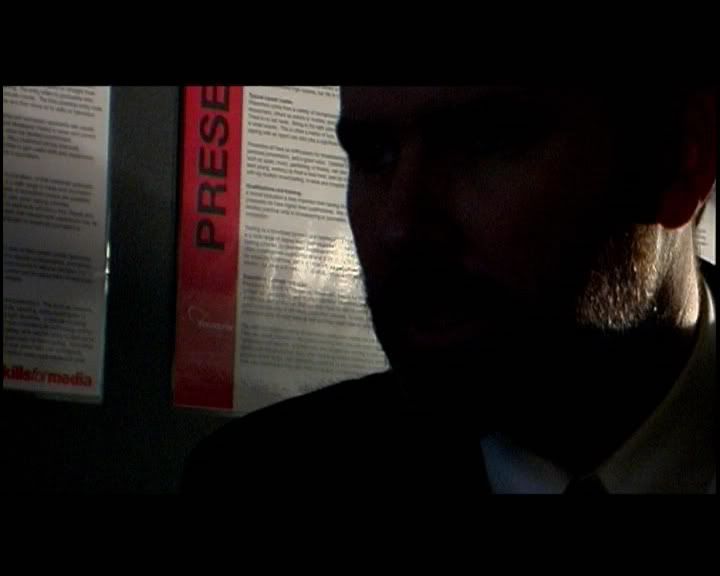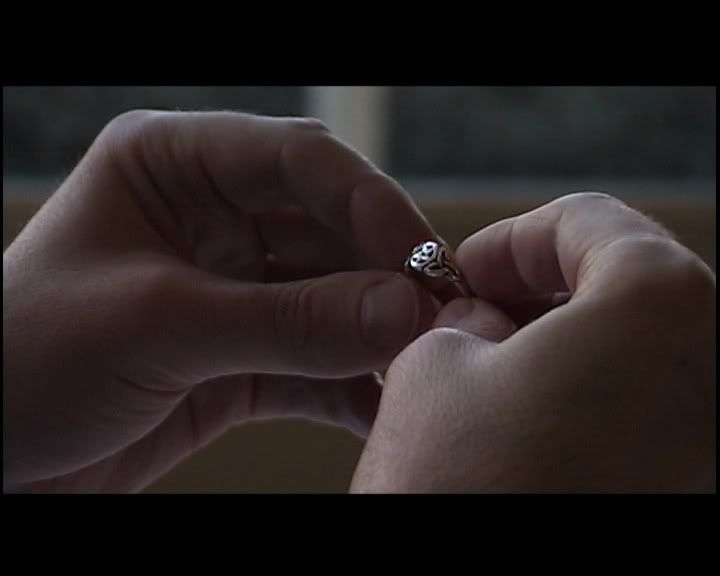
Rob White
-
Posts
24 -
Joined
-
Last visited
Posts posted by Rob White
-
-
I'm curious now, does this also apply to the bulb? Will the bulb cause issues if its operated on its side, or maybe upside down?
You would generally want to keep the heat away from the the globe's mount, so it's best not to burn them upside down. You might also risk damaging the focusing mechanism. As for sideways I couldn't see it being a huge problem, probably wouldn't want to do it for too long though, as you're still subjecting the mount to additional heat.
-
Pretty much as Victor says, if you point a fresnel straight up the heat can't escape through the lens (which can cause it to crack when it gets too hot); and if you point straight down, you get the same problem with the reflector - which will warp, melt, catch fire or explode, depending on mood.
I think the newer Arri true blue stuff has better airflow/more resistant materials so it's less of a problem. Also, K5600 fresnels tend to use ceramic reflectors so you can point them straight down with impunity. Can't point them straight up though, as the lens is still a problem.
-
Okay so I went back to the location today and checked out the fuse box.
the fuse box is 100A at 230V giving an overall output at 23,000kW and it has two circuits both at 13A, 230V giving 2,990kW.
first of is that right? and secondly if I put 2,000kW (which I shouldn't be) into the circuits would that trip the fuses? or would it be okay as both can take more?
heres the fuse box in photos just in case I missed something:
sorry about the links to the photos but when I resized them you couldn't make out any of the detail.
The Lounge sockets are on a 32A circuit, so you can run just over 7.3kW, but no more than 3kW (MAX) per socket.
The Bedroom is a 20A circuit, so that's 4.6kW total - again no more than 3kW per socket.
If you put 2,000kW it'll certainly blow! Though I guess you meant 2,000w. In which case you'll be absolutely fine.
-
Okay thank you, sorry about my spelling it isn't a strong point of mine.
the information helps. I've had a look at the fuse box and it say 5amp sockets at 230v, so would I need to change the 13 amp to 5?
as if I'm correct the I should be able to pull 1kW (using paper amps) or 1,150kW (non paper amps)
in terms of changing the Vs from 240V to 120V, I don't think that will be possible as we are working on a very tight budget unless I use this then a US to UK plug.
Would that work or be to unsafe?
Are they 5A sockets, or a 5A circuit? If you look at the individual breakers they will have a rating on. 5a sockets are typically only used for table lamps etc that are controlled by the lightswitches in a room. You could always post pictures if you aren't sure.
If you are going to 120V kit, then you'll need a suitably rated transformer. The one you posted could only run 100w. Depending on what lights you're using; it's probably a lot easier to hire them from a UK company - you won't have to worry about transformers and adaptors then.
-
In the UK most homes are fed by a 100A breaker which is then divided between the circuits.
Most circuits that feed the plug sockets are rated for 26A, but the sockets themselves are only 13A. In practise this means the biggest light you can plug in is a 2.5K HMI, but you can have two per circuit as long as they are on separate sockets. The number of circuits and how they are arranged is down to an individual building, it'll just take a little bit of investigating with the fusebox!
Hope this helps.
-
The first thing I would recommend doing with that new location is to get some bolton and floppies to cover up all the white floors, ceilings and walls that aren't in shot to cut down on any light bouncing back. Otherwise the second you turn a light on it will bounce everywhere and look very flat!
Maybe you could stick with the idea of using the 300s and play them as 3/4 back light/sidelights to keep the contrast up and make it a bit moodier.
Let us know how you get on!
-
That sounds like it's a standard US 110V plug on it, so you wouldn't be able to use it in Germany. Also each of the three dimming channels is limited to 20amps (so a 2K per channel basically.)
If you need to save money it is possible to construct your own by wiring florescent starters in line before the lamp. Only problem with this is that you're limited to the rating of the starter; and it needs to be constructed by somebody who knows what they are doing. If you have a google around there's quite a lot of info/diagrams etc.
I built my own units with 4x 100w par bulbs each, all flickering independently using this method. If you'd like some pictures/more info let me know!
Hope this helps,
Rob
-
Hi Rodrigo,
This sounds to me like it's caused my Apple/fcp's dodgy gamma, what does the footage look like after you render out and watch it on a TV?
-
This is a short extract from an imaginary episode of the X Files I made for uni; shot on DVX100 with a small lighting kit (A Redhead and a Mizar). There are some issues with the focus/camera movement that come from having a first time operator and the last scene in the corridor was done in 5 minutes due to a mix up with permissions. But how close did i get to 'the look'?
Cheers
-
Having started uni in september I've had my first chance to shoot with some decent kit (DVX, Redheads, a Mizar), which makes a change! So here are my first two projects:
Any thoughts or advice would be really helpful. Thanks!
-
Hi, I have a question about a couple of GL2 settings. On the rear of the camera I have the option of tape or card. The manual doesn't give a plain explanation about when to use 'card', it only tells you that 'card' is an option with some functions.
So what is the difference?
When you're in card mode you can record short 320x240 (i think, or somewhere in that area) mpeg clips onto the SD card. Basically, it's useless.
-
Are you talking about the jack where the canon shotgun mic's wierd looking plugs go? The canon mic has two little plugs. (I was told one is for the audio, the other is for power). If I have an Azden WLX pro, which only has one small plug, will it work when inserted in the XL1's audio jack? Thanks.
All correct, should work, just make sure to keep a close eye (ear?) on the audio as it isn't particularly good connection, and can often cause some heavy buzz.
-
this one's in christchurch: hire co
but as with all the hire places round here, they seem to be obsessed with PD 150's! that deal you've got there sound pretty damn good from what i've looked at.
I use XL1's quite a bit, so let me know if you need an un-paid student AC or anything!
-
I have to apologize ... I am not very good when it comes to the audio part of the camera! We are going to be filming an event this Sunday and the person asked if we could plug directly into the audio system so that we can capture the audio as its played instead of the audience laughing and clapping. They have a 1/4" RCA jack for us to plug in ... does the XL1 have a spot for that or do I have to get some adapters?
The XL1 has a 3.5mm stereo jack, so you could easily get an adapter (or a 1/4 to 3.5mm cable) to convert between them. one thing too look out for though is that the socket is quite recessed, so test to make sure the plug is thin enough to go all the way in, otherwise severe buzz lies in you future!
-
Hi
I'm looking for a mini-dv camera with fully manual focus, zoom, iso and exposure, something like the canon xl1 would be perfect. I will need it for 2 weeks, and would obviously like to do it as cheap as possible.
Anybody know a good place either in the South of England or that can deliver to that area?
Thanks for the help
Dan McCormick
whereabouts in the south? off the top of my head i know 2 places around southampton, if you want i can dig out the links.
-
Thanks Brian, I'd kinda come to that conclusion anyway. Makes sense the more I think about it! My only question now is which manufacturer to go for: Arri or Photon-Beard. I've used Arri lights in college, but not Photon-Beard, and I can't find much in the way of reviews or people reporting on using them.
Anyway, thanks agin for the reply.
Regards,
Cillian
Redheads are kind of a blunt tool, have you considered Arri Junior fresnels? From what i remember they were a lot more controllable, and as i assume you're shooting interviews with the lights mainly, you don't really need 600/800w, and so might better off with some 300/150's. less strain on the power supply, and less weight to carry.
-
So I should shoot in HDV 1080 for the quality, then downsize resolution in post?
Personally, i have some issues with the HDV format (GOP being the main one), so i would shoot SD (maybe do some research and see if the widescreen mode uses the full CCD), or hire a different SD camera if the money was there. Or you could just do the project in HD.
-
Sony PD-170p
in SD
thats very odd. And it even says PD 170p indicating a PAL system. 530 lines sounds more like an NTSC system? I stand corrected if otherwise. Regardless the point still stands that the viewfinder is not a reliable tool for focusing. If you still have the camera why not shoot some screen tests on a properly illuminated/white balanced subject in MCU/CU and post them, I don't really see the problem otherwise - DV doesn't handle underexposure well at all.I think you're getting your lines mixed up. PAL has 625 vertical lines, which all PAL cameras record at. the 530 figure is horizontal lines. (i'm a bit knackered, if i put that backwards, i apologize)
as for focusing, the viewfinder is fine on SD, just make sure you zoom all the way in, open up the iris a bit, focus; and then zoom out and stop back down. if you focus with the DoF at its most shallow, when you expand it again (by zooming out/stopping down) it gives you a margin of error.
-
The size of the CCD/CMOS varies between HDV cameras, just as it does between DV cameras.
On the Sony HDV cam's i've used, they have a 1/3" sensor (same as an XL1 or DVX100), but it's is 16:9, rather than 4:3. This means that when you shoot HD, you get the full 1/3", but when you go down to SD/DV, it uses a center cutout, effectively ignoring 33% of the sensor - 17.5% each side - and gives you a 1/4" chip. (which generally fond on small consumer cameras, like my cheap Panasonic DS-29)
The output of this i find is usually below par for the price of the camera.
-
There are lots of good books about visual storytelling and coverage. But a couple tips:
1) Use shots to tell the story. If the audience needs to see a closeup (or insert) of a subject to better understand its relevance to the story, then make sure you get closer coverage of the subject. This could be a person or an inanimate object. Wide shots, medium shots, and closeups are there to give the viewer information, not just because they look good.
2) Keep the scene visually interesting, not boring to watch by staying on any one shot for too long. If a shot feels like it's getting a bit long but the action or dialogue isn't done yet, then you'll probably want to get a cutaway just to relieve the visual monotony. But in this case refer to tip #1 -- make sure the cutaway helps tell the story (like a reaction shot of one of the characters), and doesn't take away from the story. Very long scenes benefit from additional blocking; having the characters move around to different positions so that the camera angles can change.
If you've got the shots you need to tell the story, and those shots aren't so long as to become boring, then you've pretty much "covered" the basics.
I agree with Michael, but don't cut for the sake of it. (not that Michael's saying that) shoot extra angles and cutaways, but when it come to editing, only use them if the scene 'needs' it. something i've seen (and done myself) is cutting to a shot just because it looks nice or something - if it disrupts the flow, leave it out.
-
I hate to burst your bubble, but that will leave you with exactly the same depth of field as being closer with a wide lens. ;)
Every time you double your distance from the subject, the depth of field will double. Also, every time you double the focal length of your lens, the depth of field will be halved. So, as long as you keep the same framing on your subject, the depth of field will be exactly the same at a given f/stop.
True, but though the depth of field stays pretty much unchanged, the background is more magnified, making it more obvious that the focus is soft, and therefore appears more out of focus.
-
Thanks for the feedback Greg.
I really do need to buy a couple of reflectors, every time i shoot something i swear i'll buy one before next time.
The phone shot is rather bland, it was one of those occasions when we only had an hour at the location.
as for shadow man, he was meant to look quite, well, shadowy... plus I only had one light. gotta love low budget.
when i have the room, i do try and pull back and use a longer lens, it doesn't change the DoF that much, but getting closer to a 85mm/100mm portrait lens is nice.
Anyone else?
Cheers
Rob
-
Hey, i've been reading the site for a while and decided to finally join in!
I've been making short films on a low end miniDV cam since i was 12 (i'm now 17), and this is my first attempt with a decent camera (an XL1) and even a couple of lights for one scene!
The film was a 5 minute "Tales of The Unexpected" thriller, and was shot in and around my college (which explains the dodgy locations).
Let me know what you think...







Three phase power from venue
in Lighting for Film & Video
Posted
You seem to be on the right track, although the fuses also say 250v. I would always recommend getting a qualified electrician to have a look if details of the supply are fuzzy - don't want to blow anything up!
Typically with a three phase live to live is 1.73 x line voltage; as the three waveforms are 120 degrees out of sync, and do not peak at the same time.